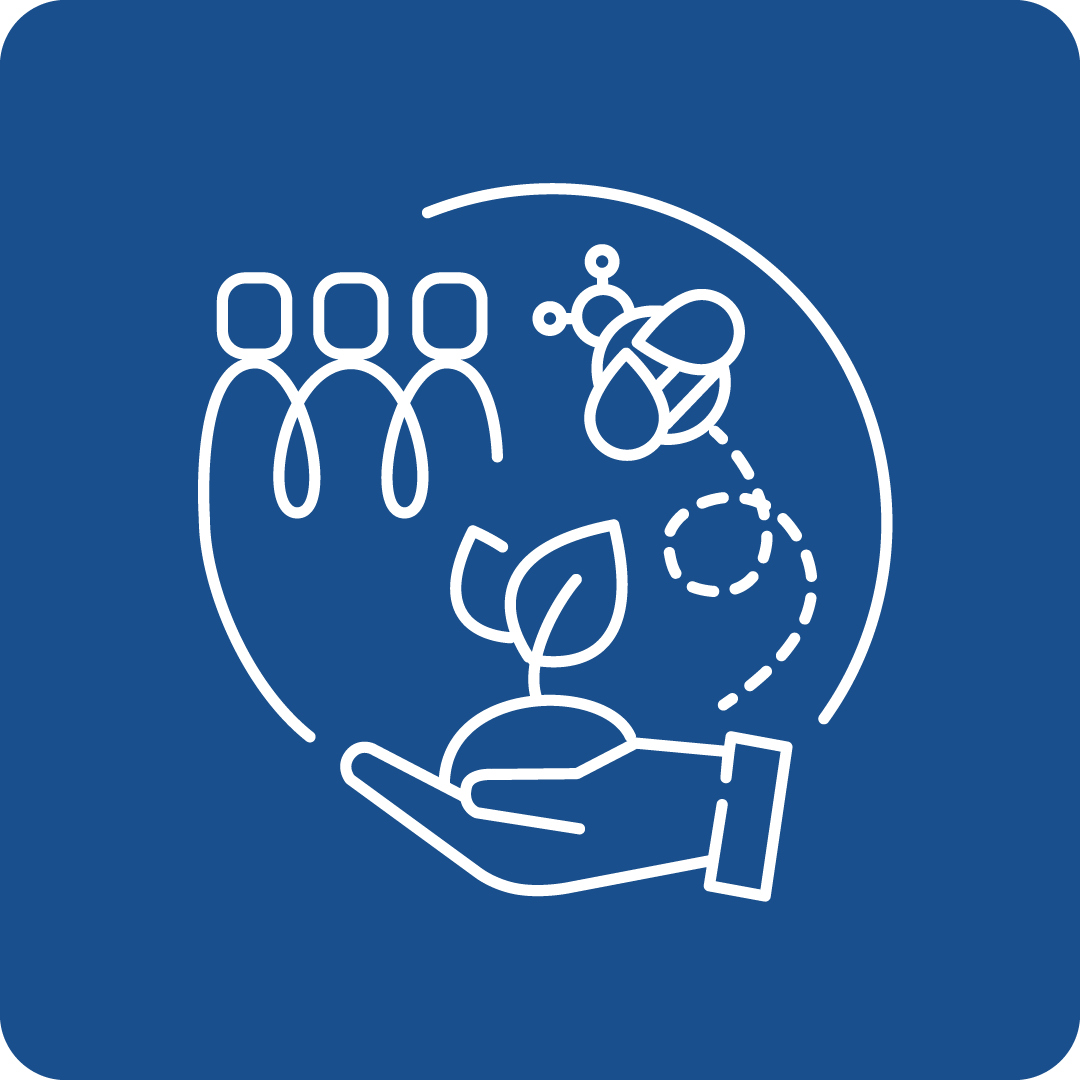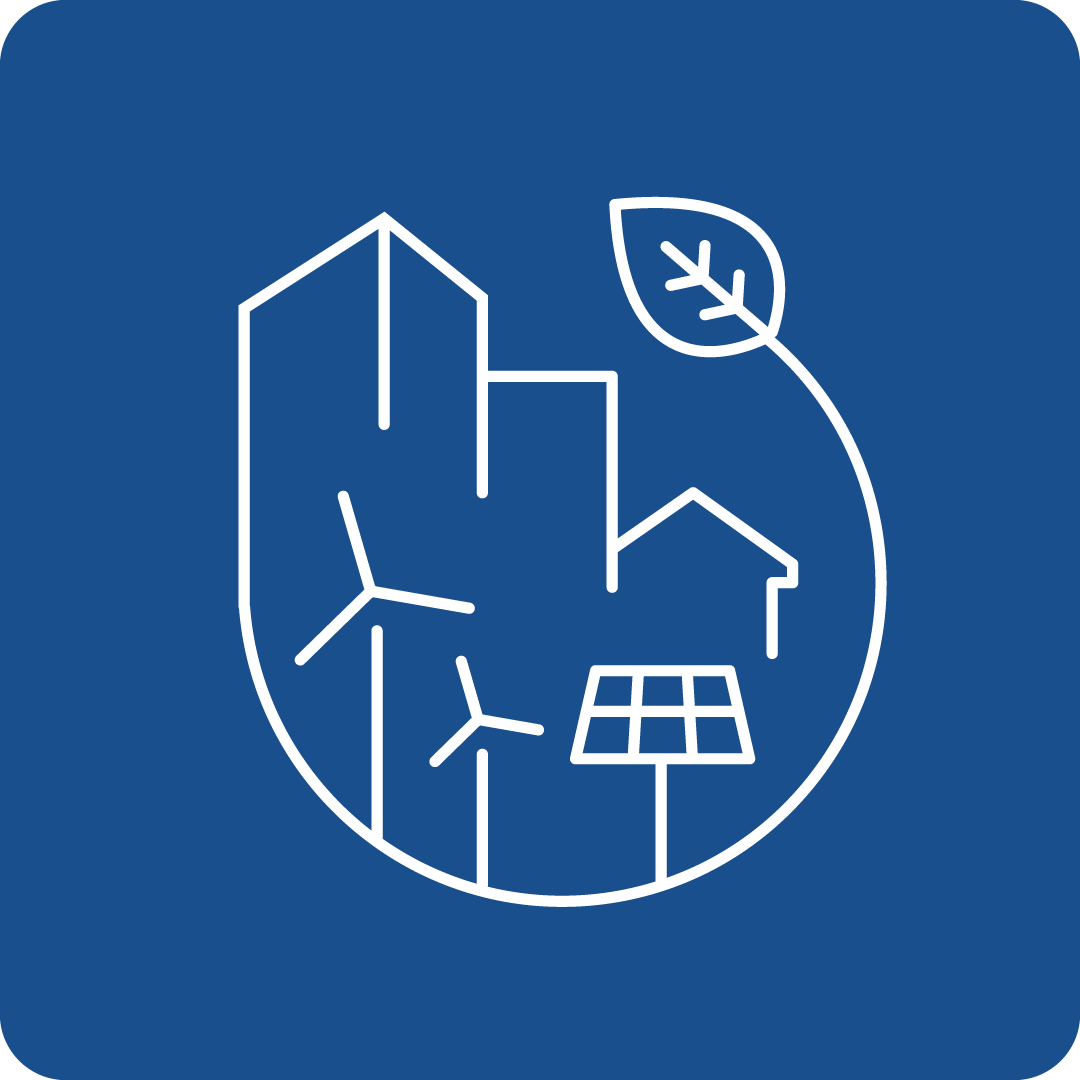Filter Search for grants
Call Navigation
Deadline expired
The deadline for this call has expired.
Call key data
Innovative solutions for energy conversion and safety of low and zero-carbon fuels in waterborne transport (ZEWT Partnership)
Funding Program
Horizon Europe: Cluster 5 - Climate, Energy and Mobility
Call number
HORIZON-CL5-2025-04-D5-10
deadlines
Opening
06.05.2025
Deadline
04.09.2025 17:00
Funding rate
70%
Call budget
€ 22,500,000.00
Estimated EU contribution per project
€ 11,250,000.00
Link to the call
Link to the submission
Call content
short description
The International Maritime Organisation (IMO)’s Greenhouse Gases (GHG) revised strategy of 2023 and the FuelEU Maritime Regulation have set ambitious goals to reduce the use of fossil fuels in waterborne transport. To that aim, maritime operators are working to replace the currently used engines with alternative power conversion systems that will allow the use of low and zero-carbon fuels for propulsion.
Call objectives
Among all ship-types, the decarbonisation of long-distance shipping will rely the most on successful innovative solutions with high power outputs. Apart from greenhouse gas emissions, other pollutants and harmful ship emissions (e.g., NOx, SOx, PM, etc.) coming from the fuel mix currently used in waterborne transport and from low and zero-carbon fuels need to be lowered and eliminated where possible. This topic aims to integrate and further develop various fuel cells (FC) and internal combustion engines (ICEs) solutions for waterborne transport running on low and zero-carbon fuels and scaling-up their technological maturity on-board. Actions addressing these challenges should also align with the European Economic Security Strategy.
Expected effects and impacts
Proposals should address one of the two following areas:
Area A: Projects demonstrating FC solutions should deliver results that will reach a combined power output of at least 5 megawatts (MW) with energy supply provided by low and zero-carbon fuels;
Area B: ICEs solutions should demonstrate a combined power output of at least 10 MW with at least 85% of the energy supply provided by low and zero-carbon fuels.
The two selected projects will be complementary, not demonstrating the same areas describe above. If in one of the areas no proposal meets the minimum thresholds, then only one project will be funded under this topic.
Regarding GHG emission reduction, proposals should follow the provisions of FuelEU Maritime and the IMO GHG reduction strategy on fuel standards.
Proposals should address all the following aspects, noting that appropriate consideration should be given to selecting a suitable design approach:
- One full scale demonstrator of a vessel above 5 000 GT, showing the potential of integrated systems for 100% energy load provision under normal operations;
- The demonstrated solutions identify their impact on air pollution, showing at least: i) 90% reduction of NOx from IMO tier III; ii) sulphur emissions below 90% and; iii) a maximum of 5 mg/kWh of PM;
- Consider fuel flexibility and address cost impacts of energy efficiency, taking into account impacts on vessel CAPEX and OPEX plus the opportunity cost of increased power conversion and fuel storage size and mass;
- An innovative storage and handling solution on-board of ships and mixing of sustainable alternative fuels with sustainable or low carbon pilot fuels. In the case of proposals addressing Area B, solutions should demonstrate a reduction in the use of pilot fuels compared to solutions available on the market, aiming to avoid the use of pilot fuels altogether;
- Solutions developed and proven to prevent and mitigate slippage and fugitive emission factors related to the use of (1) low and zero-carbon fuels and (2) the remaining non-sustainable fuel used;
- Demonstrate optimised integration of energy technologies with overall energy efficiencies from fuel energy to shaft propulsion of at least 55%, able to operate on low and zero-carbon fuels and close to zero direct pollutant and harmful ship emissions;
- Identification of specific gaps in standardisation linked to the integration of the technologies researched and development of a roadmap to gather and disseminate the relevant data in support of standardisation, including communication and discussion with policy makers, industry, academic associations, and other relevant bodies;
- Development of parameters ensuring technical compatibility between the fuel and energy conversion system;
- Provide quantitative and qualitative validated risk and safety assessments and risk control options, including setting of safety rules and distances for bunkering, linked to the use of low and zero-carbon fuels on-board and impact in ports. Develop protocols for safe response through detection and dispersion modelling (both marine and atmospheric). Evaluate the relevant human and organisational risk factors, defining personnel protective equipment and adequate response techniques and equipment;
- The plan for exploitation and dissemination of results should identify adequate business cases and provide a roadmap for the deployment of the proposed technology, including plans for scalability, commercialisation, and deployment. The proposals should identify opportunities and propose strategies for further market uptake under the Innovation Fund and complementary bunkering needs under CEF AFIF (Connecting Europe Facility – Transport Alternative Fuels Infrastructure Facility);
- Development of material (including model courses with minimum requirements and a timeframe for achieving them) for training, reskilling, and upskilling of seafarers and port operators to use the developed solutions and operational procedures, for instance by leveraging the expertise and educational resources of leading training providers and universities;
- In addition to the full-scale demonstrator, proposals should also conduct 3 replication studies on the scalability and transferability of the proposed solutions in different ship types, demonstrating the viability of the new tools, methods and process required for the integration of the proposed solutions. The scope should include not just storage tanks, engines, or injection mechanisms but also virtual prototyping and hardware-in-the-loop testing for verification, especially for the (safety) automation systems. Impact on factors like load-steps, load acceptance, and vibrations should also be included, as to facilitate the design of high-performing, maintainable, and safe vessels must be taken into consideration;
- Development of relevant on-board after-treatment of specific pollutants sourced from low and zero-emission fuels (e.g., ammonia slip or N2O for ammonia or formaldehyde for methanol);
- Proposals must justify how their objectives, results, intellectual property (IP) management and exploitation strategy contribute to the creation of EU added value and strategic autonomy throughout the supply and value chain. This includes the competitiveness of the EU waterborne industry, enhancement of the EU’s R&I capacity, technological know-how capabilities and human capital, and resilience of the EU industrial and manufacturing base. Proposals are encouraged to prioritise shipyards, equipment manufacturers and suppliers located in the EU and EEA.
Additionally, proposals are invited to prove the utilisation of big data and data science technologies to determine real-world references regarding ship performance, environmental impacts and maintenance needs of ships operating on low and zero-carbon fuels.
This topic implements the co-programmed European Partnership on ‘Zero Emission Waterborne Transport’ (ZEWT). As such, projects resulting from this topic will be expected to report on results to the European Partnership ‘Zero Emission Waterborne Transport’ (ZEWT) in support of the monitoring of its KPIs.
read more
Expected results
Project results are expected to contribute to all of the following outcomes:
- The waterborne industry will have near-to-market solutions for the safe integration and use of low and zero-carbon fuel power conversion systems as the main power source for vessels above 5,000 Gross Tonnage (GT) with overall energy efficiencies at least 55% in shaft propulsion;
- Equipment manufacturers and ship owners will have access to a knowledge repository to support standardisation for using low and zero-carbon fuels and ensuring technical compatibility between the fuel and energy conversion system;
- Public authorities, port terminals and ship operators will have access to a knowledge repository to identify hazardous scenarios for low and zero-carbon fuels used in the demonstration and their potential impact in ports, including risk control options, as well as development of protocols for safe response operations in case of an accidental release of low or zero-carbon fuels;
- The EU waterborne industry, including shipyards and equipment manufacturers will gain an increased competitive advantage due to the development of innovative software demonstrating optimised integration of energy technologies;
- The workforce across the value chain, including on-board crews and port workers directly handling low and zero-carbon fuels and carrying bunkering operations, will gain competences and certified training in bunkering operations and port authorities' authorisations.
read more
Eligibility Criteria
Regions / countries for funding
Moldova (Moldova), Albania (Shqipëria), Armenia (Հայաստան), Bosnia and Herzegovina (Bosna i Hercegovina / Босна и Херцеговина), Canada, Faeroes (Føroyar / Færøerne), Georgia (საქართველო), Iceland (Ísland), Israel (ישראל / إِسْرَائِيل), Kosovo (Kosova/Kosovë / Косово), Montenegro (Црна Гора), New Zealand (Aotearoa), North Macedonia (Северна Македонија), Norway (Norge), Serbia (Srbija/Сpбија), Tunisia (تونس /Tūnis), Türkiye, Ukraine (Україна), United Kingdom
eligible entities
EU Body, Education and training institution, Non-Profit Organisation (NPO) / Non-Governmental Organisation (NGO), Other, Private institution, incl. private company (private for profit), Public Body (national, regional and local; incl. EGTCs), Research Institution incl. University, Small and medium-sized enterprise (SME)
Mandatory partnership
Yes
Project Partnership
To be eligible for funding, applicants must be established in one of the following countries:
- the Member States of the European Union, including their outermost regions
- the Overseas Countries and Territories (OCTs) linked to the Member States
- countries associated to Horizon Europe - see list of particpating countries
Only legal entities forming a consortium are eligible to participate in actions provided that the consortium includes, as beneficiaries, three legal entities independent from each other and each established in a different country as follows:
- at least one independent legal entity established in a Member State; and
- at least two other independent legal entities, each established in different Member States or Associated Countries.
Any legal entity, regardless of its place of establishment, including legal entities from non-associated third countries or international organisations (including international European research organisations) is eligible to participate (whether it is eligible for funding or not), provided that the conditions laid down in the Horizon Europe Regulation have been met, along with any other conditions laid down in the specific call topic.
A ‘legal entity’ means any natural or legal person created and recognised as such under national law, EU law or international law, which has legal personality and which may, acting in its own name, exercise rights and be subject to obligations, or an entity without legal personality.
other eligibility criteria
Specific cases:
- Affiliated entities (i.e. entities with a legal or capital link to a beneficiary which participate in the action with similar rights and obligations to the beneficiaries, but which do not sign the grant agreement and therefore do not become beneficiaries themselves) are allowed, if they are eligible for participation and funding.
- Associated partners (i.e. entities which participate in the action without signing the grant agreement, and without the right to charge costs or claim contributions) are allowed, subject to any conditions regarding associated partners set out in the specific call conditions.
- Entities which do not have legal personality under their national law may exceptionally participate, provided that their representatives have the capacity to undertake legal obligations on their behalf, and offer guarantees to protect the EU’s financial interests equivalent to those offered by legal persons.
- Legal entities created under EU law (EU bodies) including decentralised agencies may be part of the consortium, unless provided for otherwise in their basic act.
- International European research organisations are eligible to receive funding. International organisations with headquarters in a Member State or Associated Country are eligible to receive funding for ‘Training and mobility’ actions or when provided for in the specific call/topic conditions. Other international organisations are not eligible to receive funding, unless provided for in the specific call/topic conditions, or if their participation is considered essential for implementing the action by the granting authority.
- Joint Research Centre (JRC)— Where provided for in the specific call conditions, applicants may include in their proposals the possible contribution of the JRC but the JRC will not participate in the preparation and submission of the proposal. Applicants will indicate the contribution that the JRC could bring to the project based on the scope of the topic text. After the evaluation process, the JRC and the consortium selected for funding may come to an agreement on the specific terms of the participation of the JRC. If an agreement is found, the JRC may accede to the grant agreement as beneficiary requesting zero funding or participate as an associated partner, and would accede to the consortium as a member.
- Associations and interest groupings — Entities composed of members (e.g. European research infrastructure consortia (ERICs)) may participate as ‘sole beneficiaries’ or ‘beneficiaries without legal personality’. However, if the action is in practice implemented by the individual members, those members should also participate (either as beneficiaries or as affiliated entities, otherwise their costs will NOT be eligible.
- EU restrictive measures — Entities subject to EU restrictive measures under Article 29 of the Treaty on the European Union (TEU) and Article 215 of the Treaty on the Functioning of the EU (TFEU) as well as Article 75 TFEU, are not eligible to participate in any capacity, including as beneficiaries, affiliated entities, associated partners, third parties giving in-kind contributions, subcontractors or recipients of financial support to third parties (if any).
- Legal entities established in Russia, Belarus, or in non-government controlled territories of Ukraine — Given the illegal invasion of Ukraine by Russia and the involvement of Belarus, there is currently no appropriate context allowing the implementation of the actions foreseen in this programme with legal entities established in Russia, Belarus, or in non-government controlled territories of Ukraine. Therefore, even where such entities are not subject to EU restrictive measures, such legal entities are not eligible to participate in any capacity. This includes participation as beneficiaries, affiliated entities, associated partners, third parties giving in-kind contributions, subcontractors or recipients of financial support to third parties (if any). Exceptions may be granted on a case-by-case basis for justified reasons.
With specific regard to measures addressed to Russia, following the adoption of the Council Regulation (EU) 2024/1745 of 24 June 2024 (amending Council Regulation (EU) No 833/2014 of 31 July 2014) concerning restrictive measures in view of Russia’s actions destabilising the situation in Ukraine, legal entities established outside Russia but whose proprietary rights are directly or indirectly owned for more than 50% by a legal person, entity or body established in Russia are also not eligible to participate in any capacity. - Measures for the protection of the Union budget against breaches of the principles of the rule of law in Hungary — Following the Council Implementing Decision (EU) 2022/2506, as of 16 December 2022, no legal commitments can be entered into with Hungarian public interest trusts established under the Hungarian Act IX of 2021 or any entity they maintain. Affected entities may continue to apply to calls for proposals and can participate without receiving EU funding, as associated partners, if allowed by the call conditions. However, as long as the Council measures are not lifted, such entities are not eligible to participate in any funded role (beneficiaries, affiliated entities, subcontractors, recipients of financial support to third parties, etc.).In case of multi-beneficiary grant calls, applicants will be invited to remove or replace that entity in any funded role and/or to change its status into associated partner. Tasks and budget may be redistributed accordingly.
Additional information
Topics
Relevance for EU Macro-Region
EUSAIR - EU Strategy for the Adriatic and Ionian Region, EUSALP - EU Strategy for the Alpine Space, EUSBSR - EU Strategy for the Baltic Sea Region, EUSDR - EU Strategy for the Danube Region
UN Sustainable Development Goals (UN-SDGs)
![]()
![]()
Additional Information
Applications must be submitted electronically via the Funders & Tenders Portal electronic submission system (accessible via the topic page in the Search Funding & Tenders section). Paper submissions are NOT possible.
Applications must be submitted using the forms provided inside the electronic submission system (not the templates available on the topic page, which are only for information). The structure and presentation must correspond to the instructions given in the forms.
Applications must be complete and contain all parts and mandatory annexes and supporting documents.
The application form will have two parts:
- Part A (to be filled in directly online) contains administrative information about the applicant organisations (future coordinator and beneficiaries and affiliated entities), the summarised budget for the proposal and call-specific questions;
- Part B (to be downloaded from the Portal submission system, completed and then assembled and re-uploaded as a PDF in the system) contains the technical description of the project.
Annexes and supporting documents will be directly available in the submission system and must be uploaded as PDF files (or other formats allowed by the system).
The limit for a full application (Part B) is 45 pages.
Activities are expected to achieve TRL 7 by the end of the project.
To ensure a balanced portfolio, grants will be awarded to applications not only in order of ranking but at least also to one proposal that is the highest ranked within area A or B provided that the applications attain all thresholds (and subject to available budget).
Call documents
Horizon Europe Work Programme 2025 Cluster 5 - Climate, Energy and MobilityHorizon Europe Work Programme 2025 Cluster 5 - Climate, Energy and Mobility(2548kB)
Contact
To see more information about this call, you can register for free here
or log in with an existing account.
Log in
Register now



